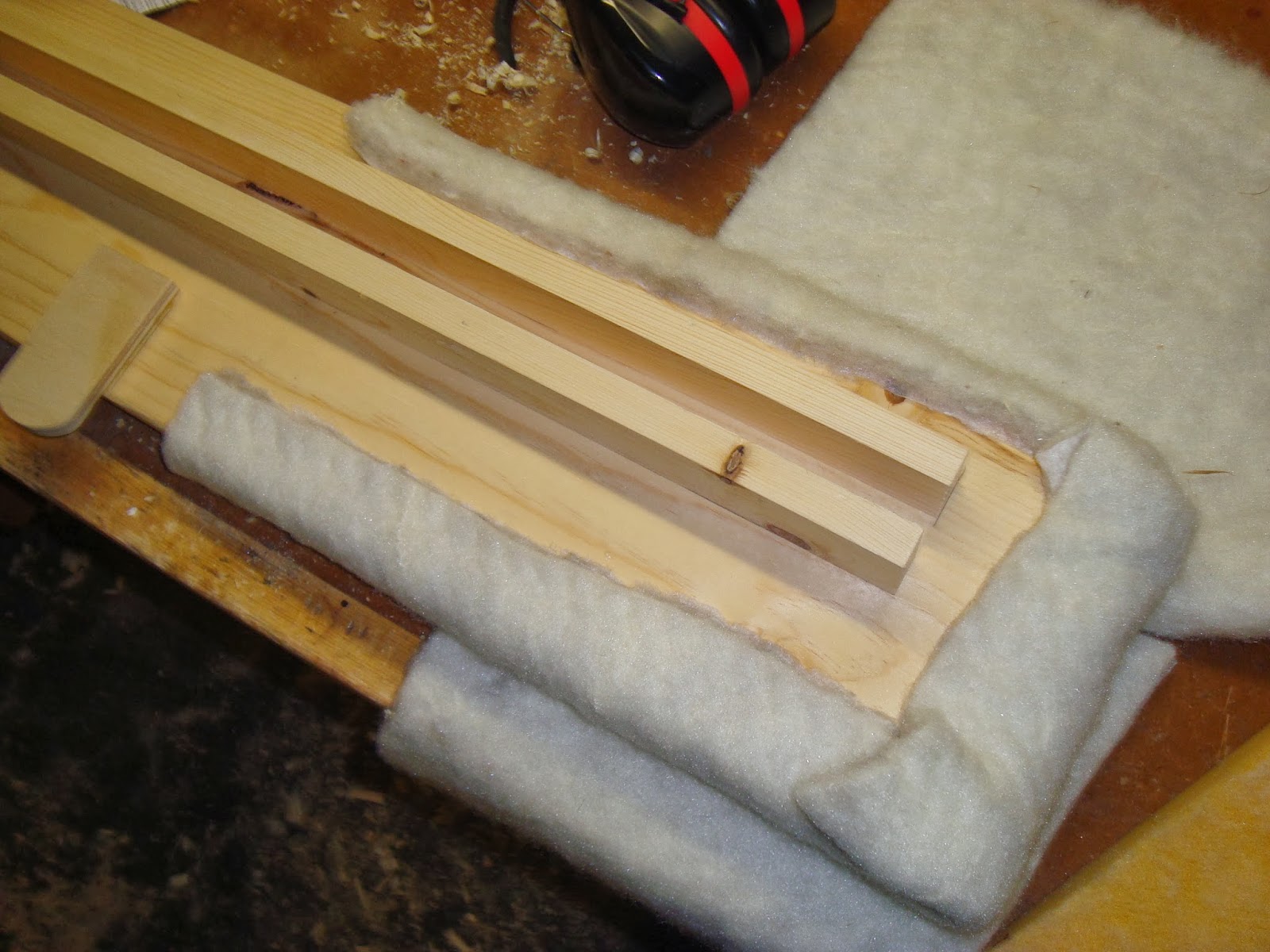I bought an old socket chisel off ebay. This is a 2 inch wide chisel with no bevels on the edges, sometimes called a slick, historically used for timber framing or other large workpieces. The chisel had the usual rust and pitting, and lacked a handle. You can see it below on the bottom left.
I cleaned the rust off with a brass wire wheel in a bench grinder.
Here you can see the left edge of the chisel has some pitting, so I have to grind away some metal to reach a non pitted area there.
I do this rough grinding on my belt sander.
Then I sharpened the chisel with my usual bench stones
Then I turned my attention to the handle. I'm making this out of a piece of red oak firewood out of my parents' firewood pile. This piece is well dried, and this is a great way to get some good usable wood for free or very low cost.
I start by splitting a piece off with wedges.
Then I hew it round-ish with a hatchet.
I whittle the end to rough size with a knife.
Then continue to shape it to fit the socket with a knife and rasp.
It fits!
A shot of the carnage left over from all this shaping.
The handle is still just round and I want to profile it a bit to fit better in the hand.
I shape it down with spokeshaves and rasps and smooth it with a card scraper.
Here's the finished profile.
To finish it, I drive in finish nails into both ends of the handle just a little ways so I can balance it on 2 blocks with v shaped notches in them and turn it to finish all sides at once. I apply 3 coats of walnut colored danish oil.
Here's the finished product. The handle is left long so that the chisel can be used 2 handed on large pieces for extra leverage for carving and shaping.
If I had this to do over again, I would have left the handle the same diameter as the outside of the chisel socket so that it formed a shoulder. This would have looked nicer instead of having the top of the socket exposed. But I expect this one will work fine for a long time.























































